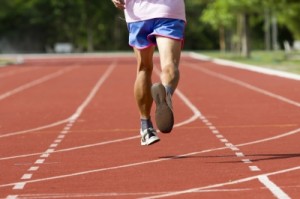What is Rolfing – and can it fix my running injuries?
 Runners come into my office often with injuries related to their favorite past time. Unfortunately running can be quite hard on the body, especially when done over a long period of time. There are always tight IT bands involved and usually some shin tension among other things. It’s important for runners to take care of their body with regular bodywork just for maintenance purposes. But it’s often an injury that prompts the first visit. This article does a good job outlining the benefits.
Runners come into my office often with injuries related to their favorite past time. Unfortunately running can be quite hard on the body, especially when done over a long period of time. There are always tight IT bands involved and usually some shin tension among other things. It’s important for runners to take care of their body with regular bodywork just for maintenance purposes. But it’s often an injury that prompts the first visit. This article does a good job outlining the benefits.
“What is it used for?
Often used as a method to treat chronic pain, like that associated with nasty RSI or muscle imbalances (as seen in professional musicians, or athletes) or for arthritis and back pain. For me, it was a debilitating hip injury, combined with some nasty stiffness in the upper back – oh and – let’s not forget that weak ankle – that led me to looking beyond the more well known treatment methods to something, perhaps more far-reaching, that might get (literally) get under the skin of the issue.
What about Rolfing for runners, more specifically?
If you’re a runner, the chances are you’re already familiar with different types of treatment methods, like physiotherapy (which takes the long, slow, but often very successful view), acupuncture (which aims to release tension from muscles, often with high levels of pain, and thus swearing, on my part) and sports massage (that kneading thing you love to hate). Maybe you even know a bit about muscle activation techniques and myofascial release therapy, and perhaps you can administer a bit of love to your knotty bits yourself, via the ubiquitous foam roller or a hard ball.
Rolfing is slightly different from each of these methods, in that a practitioner can actually lift up and move the myofascial layer back into its correct place, as well as helping to flush out waste products, as any tough massage might.
“I have worked with many amateur runners who report better economy of movement in running, as well as the resolution of various niggles such as ankle, knee or hip pain,” said experienced London-based Rolfer, Alan Richardson, when I inquired as to how his chosen method might be able to help.
Obviously, when niggles are sorted out and postural issues addressed, it’s possible to run better (especially – disclaimer! – if you’ve taken a few running technique lessons). This then leads to a reduced risk of injury, not to mention a general upsurge in style, speed and panache. It is a little bit chicken-and-egg though; you need to run with good form, to avoid overuse injuries and postural imbalances developing. But if you’ve got those problems already, the injuries are around the corner…”
[Read the rest of this article here]
Excerpt written by Lucy Fry for www.theguardian.com
Photo by Toa55 used with permission from freedigitalphotos.net

